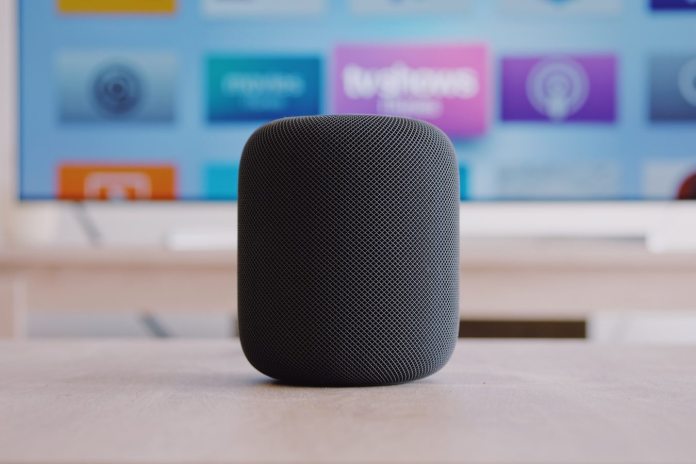My article in Data Driven Investor published 12th of September 2019.
We talk to our machines more and more often: the smartphones, computers and digital assistants on our desks. Are keyboards, and the manual operation of electronic devices, becoming obsolete?
Over the last few years, artificial intelligence (AI) has advanced rapidly, with developers regularly reporting new breakthroughs. AI algorithms work ever faster. Until recently, skeptics argued it would take ages for robots to come anywhere close to moving like humans. It was easier to program a computer to defeat humans in the Chinese game of GO than to construct a machine that could move like us. But the skeptics have been proven wrong. Today, we can see creatures made by Boston Dynamics jump and run and perform acrobatics. Robots have become as agile as we are. In fact, AI has been acting ever more human-like, and not only in robotics.
The challenge of understanding
For years, developers have been honing computers’ human-speech-processing capabilities. A great deal of thought and effort has gone into devising ways to decode natural language and support man-machine interactions. Intensive research into speech recognition began in the 1980s. The IBM computer used in early experiments could recognize thousands of words but managed to understand only a handful of complete sentences. It was not until 1997 that a breakthrough was made when the Dragon NaturallySpeaking software surprised everyone with its ability to recognize continuous speech at the rate of a hundred words per minute. The biggest challenge faced by experts seeking to achieve a breakthrough was (and, to a certain extent, still is) the fact that human speech relies not only on inner logic but also on references to external situational contexts and/or emotions. Today, it is easy for a computer to understand and answer the question “What is today’s weather?” It is far harder to wrap their processors around the meaning of, “So, I suppose I’m going to need an umbrella again next time I go out? Yes?” The challenge lies in that question’s irony, allusiveness and the reference to the past. Such rhetorical forms, common in human communications, continue to pose the biggest challenge for smart machines. Yet, the progress being made in the field is absolutely dramatic.
We don’t only talk about the weather
Today’s computers can process voice messages with excellent accuracy (an error rate of merely 5 percent). Their growing capacity to comprehend complex contexts represents a major advance in the development of algorithm-based voice-recognition technology. The huge effort put into training bots by feeding them samples of human speech has made communication with electronic devices considerably more natural. We can now ask a table-top speaker about the weather or command it to adjust room temperature or make a purchase in an online store. Meanwhile, voice-enabled bots are speaking in perfectly structured sentences. It is hard to deny they are graceful and skillful in dealing with complex communication problems. To learn more, check out this video from Google.
The 2017 Black Friday miracle
One of the key milestones in speech technology has been the development of the Siri smart application from Apple. Soon after Siri demonstrated its capabilities to the general public, it was followed by the launches of Microsoft’s Cortana and Amazon’s Alexa. More recently, Google Assistant has been taking the market by storm. Voice-operated interfaces have been establishing themselves in banking and commerce. Other industries are showing growing interest in jumping on the bandwagon.
Encouraged by this favorable market response, Microsoft, Amazon, Apple, Google, and Facebook have engaged in a race to launch new applications. Google has joined forces with Starbucks to develop an assistant to place orders on behalf of regular customers. Drivers will be able to use a voice assistant to communicate with Google Maps. Amazon is working to develop a system that will enable users to sell and/or buy products by simply talking to their computer. A year ago, Amazon’s salespeople realized that new technology has the potential to astound individual users.

Yet, in 2017, even the biggest voice recognition optimists did not anticipate what would happen on Black Friday (the day after Thanksgiving, when Americans are traditionally offered huge discounts). On that day, interest in Alexa speakers exceeded all expectations. Consumers ended up buying millions of Alexa and Echo devices. This, admittedly, was partly driven by a large-scale promotional campaign and deep discounts. Nevertheless, the numbers seem to indicate an interest that surpasses the urge to take advantage of a deal.
The 2018 Voice Labs Report estimated that by end of 2017 there were 33 million “voice-first” devices in circulation. According to the investment fund RBC Capital, nearly 130 million devices networked directly to Alexa will operate around the world by 2020. Over the next two years, Alexa sales will generate $10 billion in revenues for Amazon. Google claims that 20 percent of its users rely on voice for searching the internet on mobile devices. Over the next two years, this number is expected to increase by another 10 percent. According to the Mintel Digital Trends report, 62 percent of UK would like to use voice to control devices, and 16 percent have done so already. These numbers reveal a great deal about the underlying trend.
However, AI voice technology is not always smooth sailing.
Caveat speaker
Only two years ago, corporate failures to develop new technologies received more media coverage than successes. In 2016, Microsoft jettisoned its Tay chatbot project after it found the chatbot “fed” on profanities from web users, which it then spread itself. At the time, the media made fun of bots. The web was awash with reports from users complaining about/n Siri or Echo activating themselves unexpectedly. Some critics point to the danger of smart speakers leaking recorded user conversations online (such records can be deleted as long as one knows and remembers to do so). This leads us to the issue of personal data protection and the safe use of cameras and speakers.
Other doubts have arisen over the reliability of voice assistants. Could the answers from Alexa, Cortana, or Google Assistant to some of the more complex customer queries be manipulated for marketing purposes? And, speaking of marketing, think about voice-controlled searching. Will those searches be steered to sell products? And what about search engine optimization (SEO) in a voice-controlled environment? Websites that rely on visual/textual and all-textual advertising may lose significant value.
I began this article wondering whether a major change, including a departure from manually-operated controls, was imminent. Considering the technology’s track record over the last few years, that seems likely.
One of the key drivers behind this trend is the increasingly popular idea of “the smart home,” enabled by the Internet of Things. Apple, Google and Amazon – the heavyweights – are all on board, believing the use of voice to operate devices aligns perfectly with the preferences of today’s consumers. What we want from shopping in terms of information access and interaction is convenience, pleasure and quick results. Voice control seems positioned to satisfy all those needs. A model relying on short, quick statements and commands from shoppers and fast-responding applications and assistants is undoubtedly viable.
Given the pace of technology advancement, I don’t see why the next few years could not bring a change as radical as the transformative impact of smartphones. We’ll be able to give our eyes and hands rest as we increasingly talk (and listen) to our electronic friends.
Link to the article
Related articles:
– Artificial intelligence is a new electricity
– Machine, when you will become closer to me?
– Will a basic income guarantee be necessary when machines take our jobs?
– Can machines tell right from wrong?
– Medicine of the future – computerized health enhancement










SimonMcD
One big stumbling block for self driving cars seems to be the chaotic, varied, and informationally noisy environments they’re being designed for – eg, city and suburban roads. A better first use case would be a dedicated environment without pedestrians or non-autonomous vehicles and featuring a bunch of interconnected ground based sensors to supplement sensors on vehicles themselves. Perhaps it could feature autonomous buses for cheap trips alongside autonomous taxis for pricier travel. That’s the kind of development I’d expect to happen long before we get autonomous vehicles that can manage in non-purpose built environments.
The challenge here is partly of course getting urban planning to link up the tech, and here I think places like China may have a big advantage – they’re already planning something a bit like this for the Xiongan New Area. I imagine the sheer amount of data and hands-on experience it’s possible to get from endeavours like this will help build a bridge to ‘true’ autonomous vehicles.
Tom299
Good read Norbert
Dzikus99
Artificial intelligence and the science of robotics can be put to use in mining and other fuel exploration processes. Not only that, these complex machines can be used for exploring the ocean floor and hence overcome the human limitations.
Due to the programming of the robots, they can perform more laborious and hard work with greater responsibility. Moreover, they do not wear out easily.
John Macolm
Not everyone can live with having no humans involved in the drawing up and conclusion of AI. The approach of skeptics resembles that of drivers who swear they will never get into an autonomous vehicle or allow an IT code make decisions concerning road safety.
NorTom2
In the expanding world of the Internet of Things, entrepreneurs would be better off to remember two old adages: Resistance is futile, and if you can’t beat them join them. No matter its predicted benefit, the notion of change is hard to accept because people are settled into comfort zones and face resistance based on the status quo. Profiting from your information might be the best selling point. After all, everyone else will benefit from your data. Why not you?
Check Batin
I read several articles on this in the past. Sections of the U.S. government were asking google to develop the A.I. Systems to help identify personnel on drones and other camera systems. There were multiple reasons for requesting these improvements for military use. Google responded that they did not believe in the idea as it would/could put peoples lives at risk. After several of the articles were posted, there wasn’t much on the subject.
Dzikus99
Highly advanced organizations use ‘avatars’ which are replicas or digital assistants who can actually interact with the users, thus saving the need for human resources.
For artificial thinkers, emotions come in the way of rational thinking and are not a distraction at all. The complete absence of the emotional side, makes the robots think logically and take the right program decisions. Emotions are associated with moods that can cloud judgment and affect human efficiency. This is completely ruled out for machine intelligence.
Peter71
For this danger to be realized, the hypothetical AI would have to overpower or out-think all of humanity, which a minority of experts argue is a possibility far enough in the future to not be worth researching. Other counterarguments revolve around humans being either intrinsically or convergently valuable from the perspective of AI.
JohnE3
Norbert – thank you for great read
Oscar P
Spot on. The article pretty literally states that “if it doesn’t solve all world problems in one swoop, then it’s completely useless”. Which sounds surprisingly dumb compared to the otherwise well laid out details of the text.
For a 10 year old invention, that’s already impressive. More is certainly to come.
CaffD
Despite widespread references to ‘responsible AI’, responsibility and accountability are rarely defined. Nonetheless, specific recommendations include acting with ‘integrity’ and clarifying the attribution of responsibility and legal liability, if possible upfront, in contracts or, alternatively, by centering on remedy. In contrast, other sources suggest focusing on the underlying reasons and processes that may lead to potential harm.
Dzikus99
‘AI for Good’ is a United Nations platform. It is centred around an annual Global Summit that promotes the exchange on the beneficial use of AI by building specific projects. The purpose of organizing global summits that are action-oriented, came from an existing discussion in AI research being dominated by research streams such as the Netflix Prize (improve the movie recommendation algorithm). The AI for Good series aims to bring forward AI research topics that contribute towards more global obstacles, in particular through the Sustainable Development Goals, while at the same time avoiding typical UN-style conferences where results are usually more abstract.
Adam Spark Two
Great article